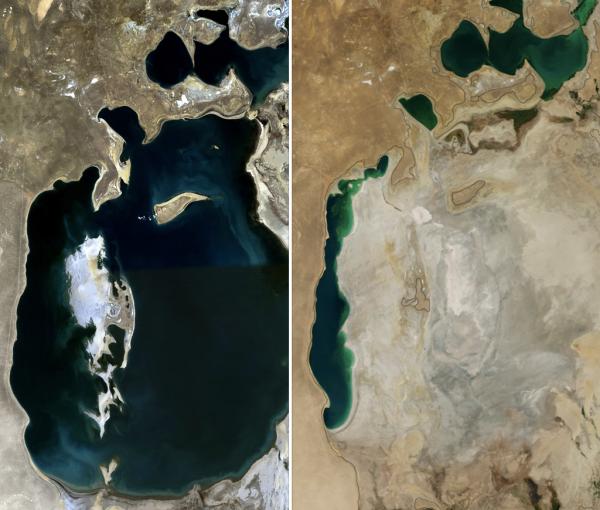Multiple Causes Of Central Asia Water Stress
Population Growth, Mismanagement, Climate Change
6 Sep 2021 by The Water Diplomat
Almaty, Kazakhstan

The Central Asian republics of Kazakhstan, Kyrgyzstan, Tajikistan, Turkmenistan and Uzbekistan are suffering economic damage and unrealised benefits in water and energy of up to $4.5 billion USD due to inefficiencies and a lack of transboundary cooperation, according to a report by the Eurasian Development Bank (EDB).
Preliminary estimates indicate the region could add $22 billion USD (7 Percent) to its GDP over five years "by remedying inefficiencies in the water and energy complex".
With the region dependent upon the dwindling resources of the Aral Sea, which has been massively depleted by over-irrigation and increased evaporation caused by climate change, the report addresses the need for investment in water and energy as well as an urgent requirement for the five republics to establish efficient interstate water regulation.
It identifies "substantial development needs" in water and energy infrastructure of at least $90 billion USD from 2021-2030, which is far in excess of current estimates of $52.8 Billion in investment proposals.
Stressing the need to strengthen trade and economic ties among the countries, the report also notes that solving the problem of shared transboundary water resources will be critical to securing economic development in the region as a whole, and cannot be regarded separately from country-specific development models.
The combined effects of mismanagement, population growth and climate change mean the population has water resources amounting to 1,405 m3 per person per year - below the internationally recognised stress threshold of 1,700.
Analysts predict that a moderate development scenario could move the region closer to the "scarcity" threshold of 1,000 m3 by 2050, and conclude that achievement of the region's sustainable socio-economic development goals will be largely dependent on the state of water resources.
"The key challenges in Central Asia’s water and energy complex will be associated with the growing scarcity of water resources, said Evgeny Vinokurov, EDB's chief economist. "Water use in Central Asia is growing rapidly, driven both by demographic factors and by the development of manufacturing and agriculture, primarily increased irrigation,” he added.
Since gaining independence from the former Soviet Union 30 years ago, the republics' combined population has grown by one third from 54.3 million to 72.4 million, with growth projected to continue to 81.6 million by 2030 and 90 million by 2050.
Photo credit: Aral Sea as photographed by NASA in 1989 and again 2014
Collage by Producercunningham. - 1989: aral sea 1989 250mFile:Aralsea tmo 2014231 lrg.jpg, Public Domain, https://commons.wikimedia.org/w/index.php?curid=35813435
